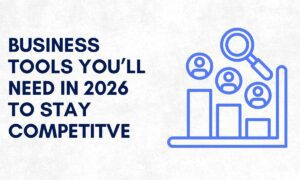Unlocking revenue growth has always been shaped by the tools of the moment. From spreadsheets that standardized reporting to the rise of cloud platforms that opened access from anywhere, each advance has set a new pace for competition. Today, the most powerful catalyst is machine intelligence, a force that promises not only efficiency but also a fundamental rethinking of how companies design their go-to-market (GTM) strategies.
“Each tech wave brings a new level of productivity for revenue growth,” says Daniel Saks, CEO and co-founder of Landbase. “In the on-premise world, applications acted as local databases. The cloud allowed access from anywhere. But in those generations, you still had to work for your software. In this new era of machine intelligence, the software should work for you.”
At Landbase, a company dedicated to transforming go-to-market strategies through machine intelligence, Saks is charting a new territory by integrating machine intelligence with human performance.
Agentic AI and the Future of Trust in Business
Agentic AI is changing the daily experience of work and unlocking new approaches to growth. Saks sees the promise of machine intelligence lies in the creation of tools that give people back their time and making work more human, not less.
“The last decade of tech hasn’t been good for humans,” he says. “This next era should allow us to return to the way humans were built: spending more time with each other. The machine can process what the human brain cannot, freeing us to build relationships and solve problems creatively.”
That means sales and marketing roles will evolve dramatically. Administrative tasks like data entry into CRMs may be automated, while professionals spend more time in the field with clients. “We call it reclaiming your day,” Saks says. “Technology can do the work for you, so you have more time to build trust.”
Practical Pathways to Adoption
To prevent being left behind as AI-native companies surge ahead, companies must lean into adoption and experimentation. Saks outlines three practical steps to integrate AI into sales and marketing:
- Map and augment workflows. Companies should analyze go-to-market workflows and identify how AI-native technology can augment human tasks, from finding target customers to generating campaigns.
- Balance delegation with oversight. Leaders must learn when to delegate to AI while safeguarding brand voice. Saks compares this to coaching a junior employee—AI agents need guidance.
- Adopt rapid iteration. Success rarely comes from a “set it and forget it” approach. “The faster you can learn, the better,” he says, pointing out that companies must be prepared to adapt quickly as tools evolve.
The Breakthroughs Behind GTM2
At Landbase’s AI Lab, Saks and his team are pushing these ideas into practice with GTM2 Omni, a system built on lessons from earlier models. While GTM1 focused on prediction models, channel-specific content generation, and workflow execution, GTM2 goes further by layering in more sophisticated data training and automation. It places greater emphasis on precise targeting and qualification, helping businesses understand their customers more deeply and prioritize outreach with greater accuracy and speed.
“We realized the success of a campaign depends more on the credibility of your business than the message or channel,” Saks explains. “Credibility doesn’t come from you talking about yourself, but from credible people talking about you.”
This discovery ties into what Saks calls “AI SEO” or Generative Engine Optimization. Just as word-of-mouth has always built reputations, the digital age requires companies to encourage customers and peers to create indexed proof of credibility—through reviews, press coverage, or thought leadership content. “The more credible the voices speaking about you, the faster your business will grow,” he says.
Human-Centered Optimism
For all his focus on algorithms and automation, Saks sees AI’s greatest potential in enabling humans to be more human. “You shouldn’t need a PhD to grow your business,” he says. By allowing machines to handle the repetitive and the computational, leaders can return to creative thinking, problem-solving, and relationship building—the activities that have always driven growth.
For more insights from Daniel Saks and to learn more about his work, follow him on social media on LinkedIn and X (formerly Twitter), or explore his company website.































